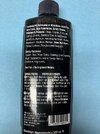CQB45ACP
Member
Yeah for some time now I only load for a range visit or two into the future.I don’t stock years worth of loaded ammo, I can tumble empty brass anytime to make it look new.
Just recently I started cleaning already loaded rounds too just for fun if needed.
And, I'll also tumble it to get it clean before I hand polish with Flitz liquid. This is largely just to take pictures before I post them here and freak out the guys at the range.


